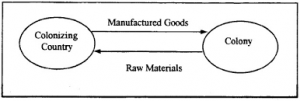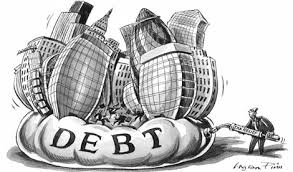A person known by the name of James Hicky started a paper after seeking permission of the East India Company. This newspaper was called ‘Bengal Gazette’ (or Calcutta general advertiser). The entire newspaper consisted of only 4 pages. The newspaper was well-known for fearlessly criticizing the money-making and political policies of the East India Company.
Bombay Courier was launched in 1792, this newspaper published advertisements in English and Gujarati. 1816, was the year when the first newspaper under Indian Administration appeared. It was the “Bengal Gazette” which was published by Gangadhar Bhattacharjee. It advocated the reforms of Raja Ram Mohan Roy. To counteract the religious propaganda of the Christian missionaries of Serampore, Raja Ram Mohan Roy published The Brahmanical Magazine.1822 saw the rise of Chandrika Samachar in Bengal and Bombay Samachar in Mumbai by Ferdunji Marzban. Oodunt Martand was the first Hindi newspaper, which was published in 1826 in Bengal. Later came Jami Jahan Numa, a newspaper that was pro-establishment. Pune saw its first Anglo – Marathi Newspaper in 1832 which was published by Bal Shastri Jambhekar In 1861, Mr Knight merged the Bombay Standard, Bombay Times and Telegraph and brought out the first issue of Times of India.
Hicky was imprisoned, for fighting for the liberty of press, his paper was stopped. But from 1780-1793, 6 papers were started in Calcutta, 3 in Madras and 3 in Bombay. This was the basic foundation of free press of India. During this era, the birth of vernacular press took place which mainly wrote about liberal views and was also spreading knowledge about various matters. An important paper called Bombay Times was founded in 1838. Now the Bombay Times is known as Times of India. In the fight against British, few papers played a very noteworthy role. This included ‘Hindu Patriot’ which launched movements against the British by asking the people not to grow crops for the British traders. Bal Gangadhar Tilak, owner of the newspaper ‘Kesari’, ignited the fire of independence in millions.
One of the pioneers of Indian language journalism was Raja Ram Mohan Roy with his Persian newspaper Miratool Akbar. He created the newspaper in order to indicate to the rulers’ knowledge of the real situation of their subjects and make the subjects acquainted with the established laws and customs of their rules. Roy later stopped later in protest against the Government’s Press Regulations.
Another important newspaper that contributed in the freedom struggle was Bengal Gazette or as it was also known, Hicky’s Gazette. James Augustus Hicky started it in 1780 ‘in order to purchase freedom for my mind and soul’. ‘A weekly political and commercial paper, open to all parties but influenced by none.’ The paper was, in essence, no better than a scandal sheet. Thus, in the next year (1981), Hicky was arrested and put into jail, from where he continued to write for the Gazette.
Restrictions were brought back in the form of Gagging Act, 1857. This was the year of what the British historians termed ‘the Sepoy Mutiny’, while a few Indian historians called it the ‘first war of Independence’. The Mutiny brought the rule of the East India Company to a close, with the Crown taking over the ‘colony’, with the promise of religious toleration and press freedom. The main topics of discussion in the English and vernacular press before and after the Mutiny were sati, caste, widow remarriage, polygamy, crimes and opposition to the teaching of English in schools and colleges. Bombay’s Gujarati press, in particular, excelled in the defence of the Indian way of life. In 1876, the Vernacular Press Act was promulgated. The English-controlled papers like The Times of India, the Pioneer and the Madras Mail didn’t report it to a great extent. However, the vernacular papers like Amrit Bazar Patrika and Kesari reported the inaugural meeting at length.
Despite the hold the television industry has on the country, it is the print press which is attracting more advertisers, making up 47% of the whole share. Newspapers in the current time have penetrated only 25% of the total population of the country. It is true that these days, the digital technology is mauling the traditional print newspaper. One of the reasons why this digital phase has not affected India that much is because only 7% of the Indians surf the Internet regularly. The rich English language, extremely cheap cost and the total availability of the newspapers also help in their sale.
The growth of India’s economy has had its impact on the newspaper industry. The circulation increased, resulting in increased revenues. Here, the dailies in the regional languages command more than half of the average readership, as per a report in 2010. There are 90 million readers of dailies in the regional languages as compared to 54 million for dailies in Hindi and 8 million for dailies in English.




9 Comments. Leave new
wowww content
Its very informative. You explained history well.. interesting read.. keep going..
Its always good to know the beginning
Very nice article!
Wow a big salute for the content that you have very well researched 😀
The presentation as well as the content is like 5/5 “D
Yup the start of this awesome field is also really Awesome 😀
Keep it up 😀
keep it up 😀
But Bengal Gazette was a 2 paged weekly.
And he was imprisoned for attacking Warren Hastings his wife and Elijah Impey(chief justice) through his newspaper.
Actually it is best formate o read history of Indian journalism.. If it is enhence with some things in points, it will more interesting to read. Totally good.
Super